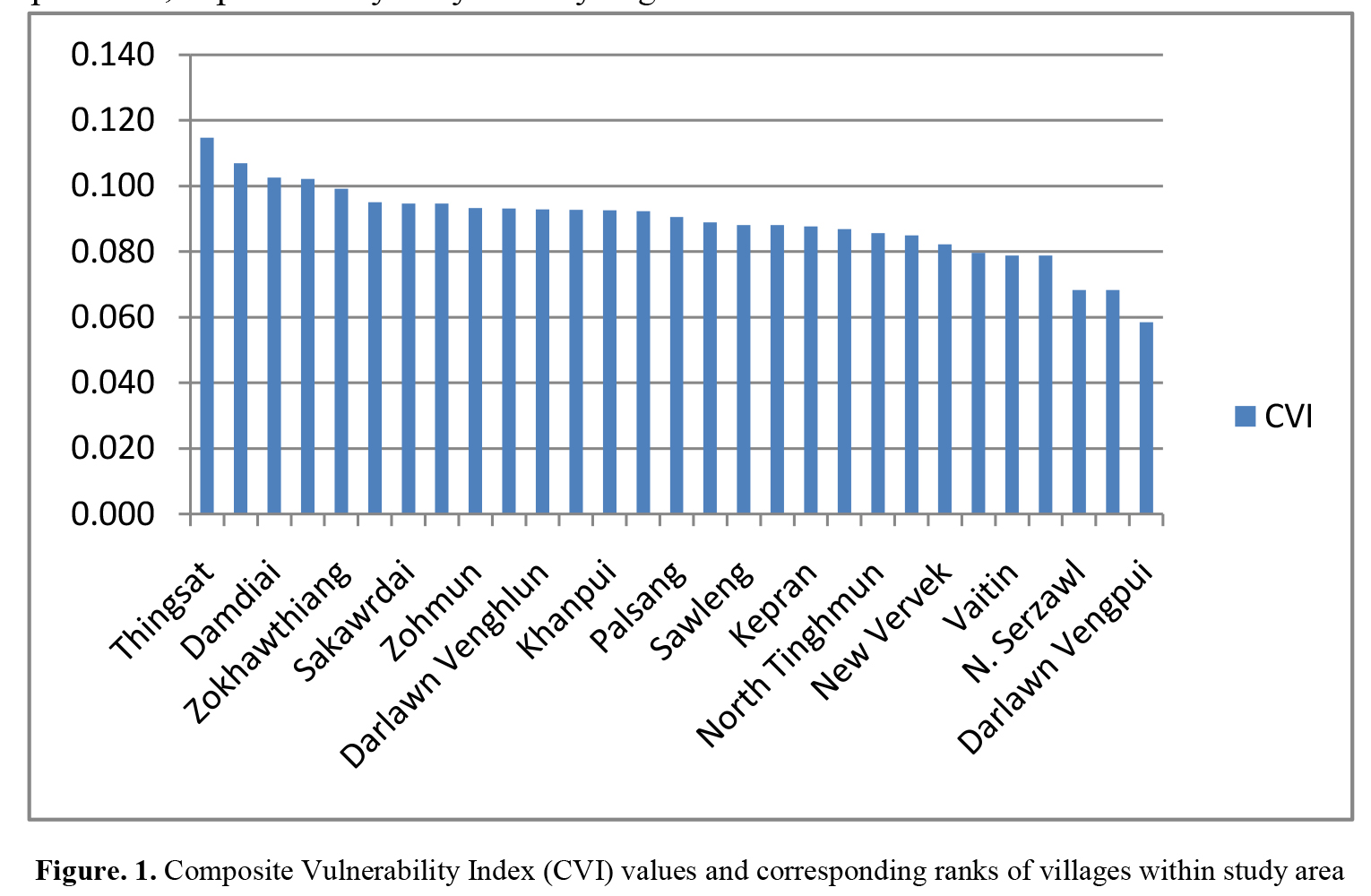Village-Level Assessment of Climate Vulnerability in Darlawn Block, Mizoram, India: Biophysical and Socio-Economic Sectors
Home > SCCCC > Phase II >Village-Level Assessment of Climate Vulnerability in Darlawn Block, Mizoram, India: Biophysical and Socio-Economic Sectors
Mizoram has been identified as one of India’s most climate-vulnerable states, with its mountainous terrain and shifting weather patterns intensifying environmental hazards. This study evaluates climate vulnerability at the village level in Darlawn Block, Aizawl District, Mizoram, using a structured methodology based on the Intergovernmental Panel on Climate Change (IPCC) risk assessment framework. The Composite Vulnerability Index (CVI) was formulated by integrating biophysical and socio-economic indicators, which were normalized and analysed to rank the vulnerability of 29 villages. The findings indicate that Thingsat village exhibits the highest vulnerability, while Darlawn Vengpui is the least vulnerable. The study also identifies key drivers of vulnerability, including a low percentage of irrigated agricultural land and a lack of diversified income sources. The results emphasize the importance of localized climate adaptation strategies tailored to the specific needs of different villages. By pinpointing the factors contributing to climate vulnerability, this research supports informed policy-making, resource allocation, and adaptation planning to promote sustainable development in rural communities.
Report can be downloaded here


Drivers of Vulnerability
